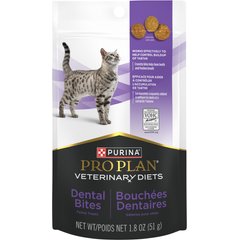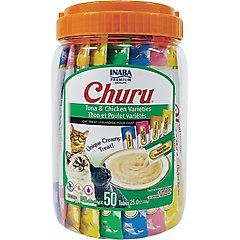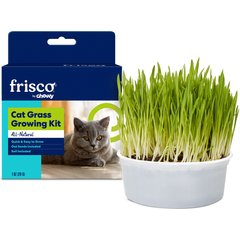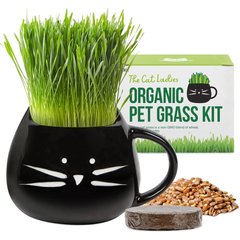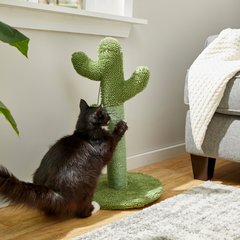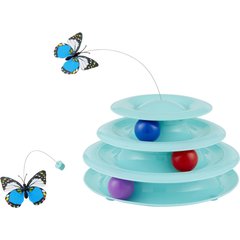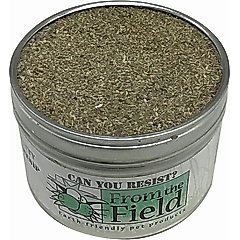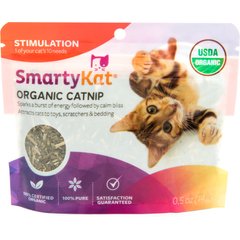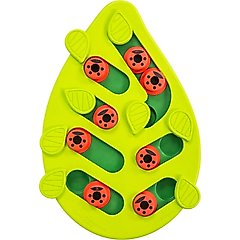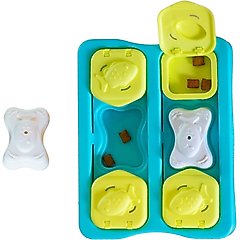Why Does My Cat Eat Plants? Is This Normal?
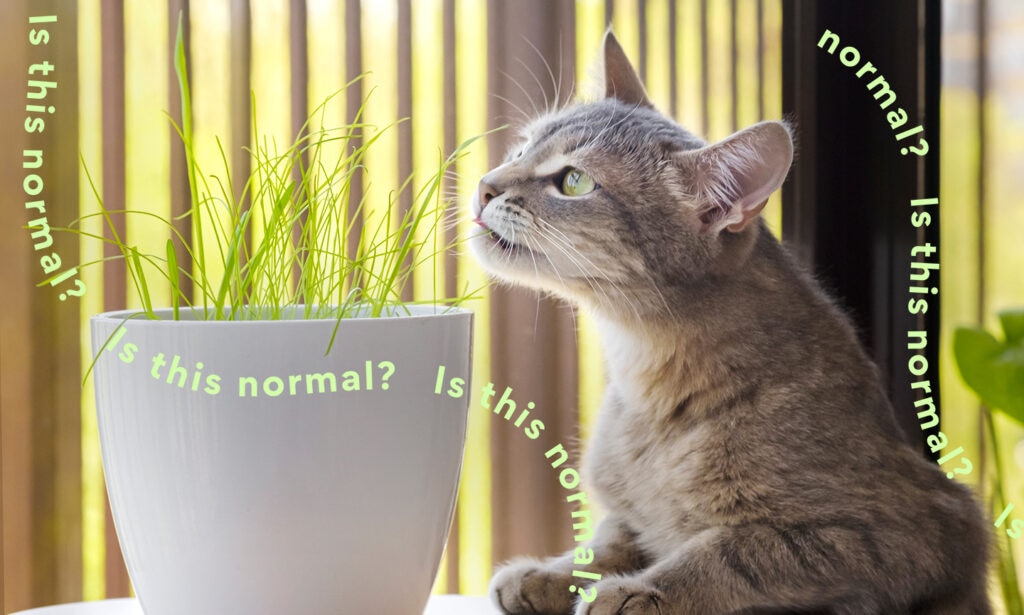
Photo by Chewy
Q: My cat chews and nibbles on plants even though she has food and water. She gets her favorite treats, too, but she still seems to want to eat my houseplants. Why do cats eat plants? Is this normal?
A: Yes! It’s completely normal for cats to eat plants and show an interest in plant material even though cats are primarily meat-eaters. This is a common behavior in healthy cats and can generally be linked to their innate curiosity or liking a plant’s taste or texture.
We spoke to a certified cat behaviorist and a veterinarian to explain why cats eat plants.
Why Do Cats Eat Plants?
According to a 2021 study on characteristics of plant eating in domestic cats, this behavior is very common. Based on nearly 2,300 responses from pet parents, 71% of cats were seen eating plants at least six times, 67% of cats who were seen eating plants more than 10 times did it weekly, and only 11% of cats were never seen eating plants.
But why do cats like to eat plants? Here are six possible reasons.
They’re Curious
Between licking our naturally salty skin and nudging us in hopes of getting a bite of our tuna salad, cats show us that nothing is quite off-limits when it comes to investigating an enticing scent.
Cats—especially younger or more playful cats—explore their environment with their mouth, says Cristy Brusoe, certified cat behaviorist and founder of Cat Training by Cristy, in Tampa Bay, Florida.
In the 2021 study, researchers found that younger felines between 1 and 3 years old ate plants more frequently than adult cats did. This, the study notes, suggests that the plant-eating behavior isn’t learned from older cats.
They Like the Taste and Texture
Your cat could simply enjoy the taste or feel of certain leaves, Brusoe says.
Depending on the plant’s texture, your kitty could find the interestingly smooth, velvety, or fuzzy leaves appealing to their senses—similar to how we might find the crunchiness of a carrot or the fluffiness of scrambled eggs appealing.
Offering a variety of feline-friendly treats, like Made by Nacho catnip and freeze-dried treats, can curb their plant cravings and make for a purr-fect snack.
Recommended Products
They’re Soothing an Upset Stomach
While cats primarily eat meat, they might look to eat plants as a digestive aid.
For example, eating grass can help with digestion or hairball elimination, Brusoe says. However, give your BFF cat-friendly grass, such as Frisco Natural Cat Grass Growing Kit. It’s a safer, more beneficial option compared to plants.
Recommended Products
They’re Bored or Stressed
Although our feline friends can be fiercely independent at times (or all the time, depending on your kitty’s personality), they’re at their best with plenty of opportunities to stay mentally and physically fit. And if a cat lacks stimulation, they might turn to plants for entertainment, Brusoe says.
Stressed or bored cats might find themselves investigating certain objects they normally wouldn’t or causing a little more kitty chaos than usual.
Enriching your kitty’s daily life with interactive toys and scratching posts, like the Frisco cactus scratching post, is a great way to keep them happy and healthy.
Recommended Products
They’re Tapping Into Their Instincts
Wild cats, who were often exposed to intestinal parasites, might have eaten certain plants to help with digestion or to supplement their diet, says Maggie Placer, DVM, veterinary sciences program manager at EveryCat Health Foundation and owner of Placer Veterinary Care, in Lafayette, Louisiana.
Although more research is needed, eating plants could serve a biological purpose in cats, Dr. Placer adds.
They Have Pica
In some cases, cats can develop pica, a condition where they compulsively eat non-food items, ranging from houseplants and soil to plastic bags and wires.
If you notice your cat taking a sudden liking to out-of-the-ordinary objects, this can be a sign of nutritional deficiencies or underlying medical issues, Brusoe says.
What Plants Are Poisonous to Cats?
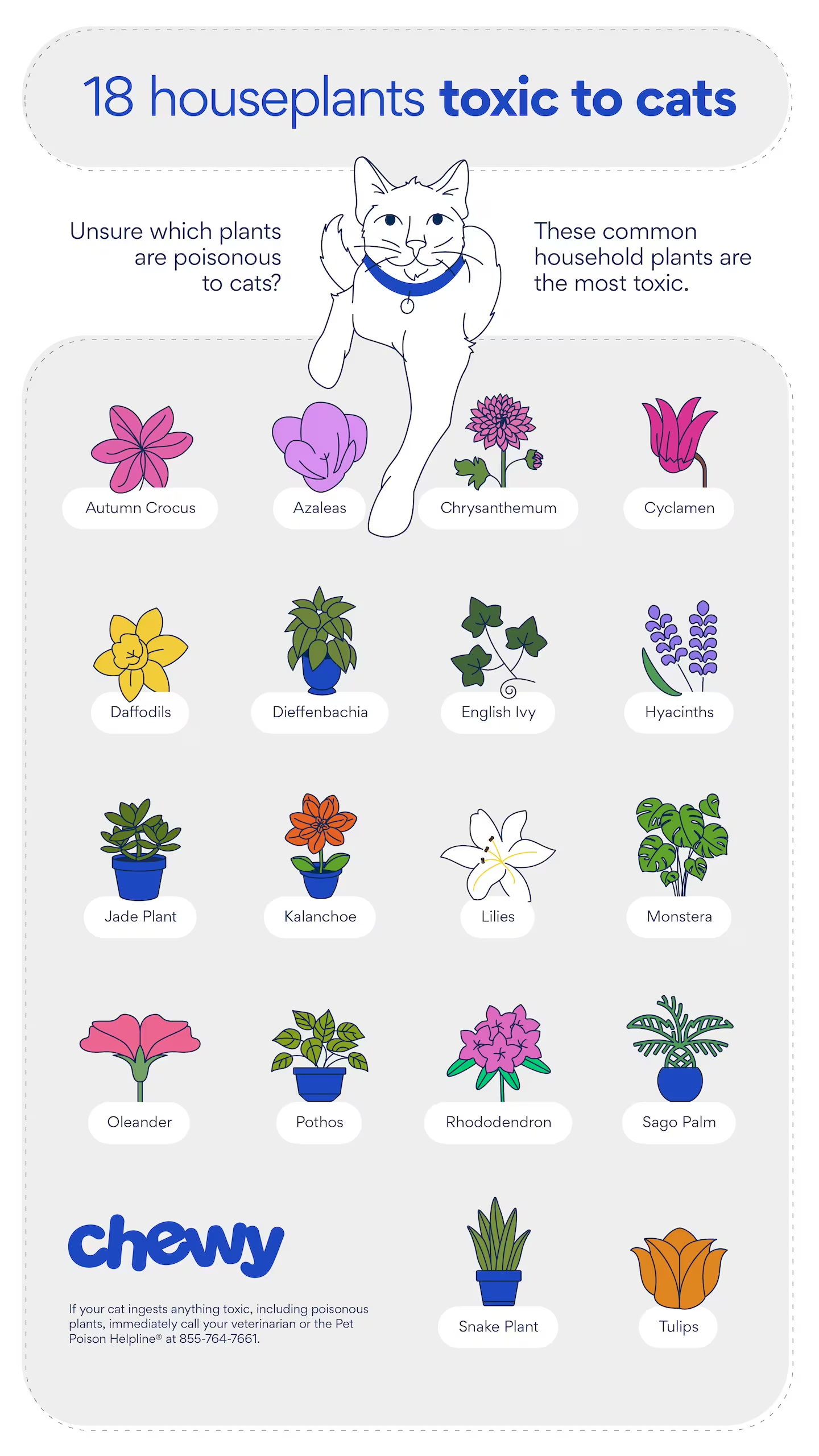
Photo by Chewy
With an abundance of different types of houseplants and outdoor plants out there, it’s important to know which ones aren’t cat-friendly, so you can keep your furry pal safe.
A few popular plants that are toxic to cats include:
- Lilies
- Monstera
- Azaleas
- Daffodils
- Tulips
- Jade plants
What Do I Do if My Cat Eats a Poisonous Plant?
Despite our best efforts to keep harmful foods or items away from our cats, they might still eat something they shouldn’t.
If you suspect your cat has ingested any part of a poisonous plant, whether located in your home or outside (including chemically treated grass), call your veterinarian or a 24/7 animal poison helpline as soon as possible, such as:
- Pet Poison Helpline: 855-764-7661; a consultation fee applies
- ASPCA Animal Poison Control Center: 888-426-4435; consultation fee may apply
How Do I Stop My Cat From Eating My Plants?
Does your kitty companion have a fascination with your plants as if they’re a professional landscaper?
Brusoe shares these tips on how to keep cats from eating plants:
- Provide safe alternatives. Offer them cat-friendly options, such as wheatgrass, barley, oats, or catnip.
Recommended Products
- Increase enrichment. To reduce boredom-driven chewing, provide your feline with more interactive play, puzzle toys, and cat trees.
Recommended Products
- Make plants less appealing. There are some scents and sounds that cats naturally don’t care for. Using deterrents, such as citrus peels; diluted vinegar sprays (on non-toxic plants); or motion-activated pet deterrents, can keep your cat safe and your plants intact.
- Relocate plants. Hanging pots and high shelves are key to keeping houseplants out of reach. If your cat tends to jump on shelves no matter how high they’re placed, consider opting for hanging pots.
An occasional nibble of a cat-friendly plant is completely normal. However, if you notice any of the following, it is considered abnormal behavior, and you should schedule a wellness exam with your vet to rule out any potential health-related causes:
- Your cat is obsessively chewing on plants to the point of damaging them frequently or disrupting your cat’s normal routine.
- The behavior is accompanied by:
- Your cat is chewing on inappropriate, non-food objects (for example, plastic or fabric) alongside plant-eating.
- You notice a sudden onset of this behavior, especially in older cats.
- You notice an increase or decrease in the level of interest toward plants they’re exposed to.
If the behavior continues after you try to prevent it, consult a feline behavior expert to learn more about the root cause of your cat’s plant eating and get customized solutions.
This content was medically reviewed by Teresa Manucy, DVM, Chewy veterinarian.

